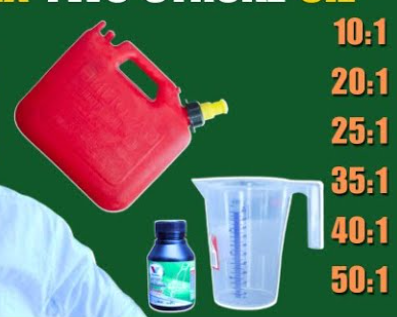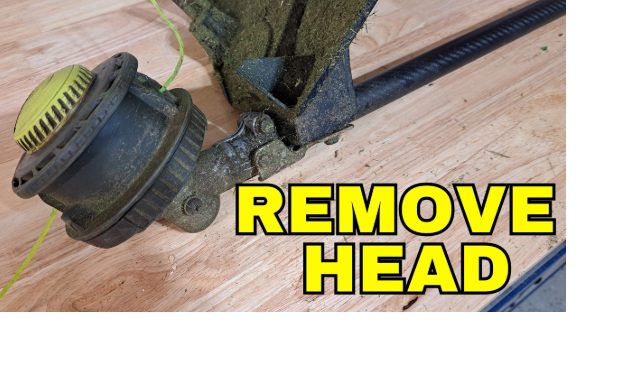How to Adjust Ryobi Mixture?
A Ryobi two-cycle engine needs the right mix of fuel and oil to work properly. This mix powers the engine and keeps it cool and lubricated during use.
Many people face trouble with their Ryobi tools because of a wrong fuel mixture. The result? Rough idling, hard starts, or even engine damage.
A small mistake in the mixture can shorten your tool’s life. That’s why knowing how to mix and adjust it correctly is so important.
This guide explains each step in simple language so you can keep your Ryobi tool running smoothly for a long time.
Understanding the Ryobi Mixture

What Is the Fuel Mixture?
A two-cycle Ryobi engine uses one fuel mixture made of gasoline and 2-cycle oil. Unlike four-stroke engines, it doesn’t have a separate oil compartment. The oil mixes with gasoline to lubricate internal parts while the engine runs.
Without the correct mixture, your engine won’t get enough lubrication. That means overheating, rough sounds, and even permanent damage to the piston or cylinder.
Why It Matters
The mixture affects everything—performance, lifespan, and reliability. A good mix helps the tool start faster, run cleaner, and burn fuel efficiently. A bad mix can make it smoke too much, lose power, or stall often.
Think of it like your Ryobi’s heartbeat. The right mixture keeps it strong and steady.
Correct Ryobi Fuel Mix Ratio
Most modern Ryobi 2-cycle engines use a 50:1 ratio of gasoline to oil. That means 50 parts gas for every 1 part oil.
To make it simple:
-
For 1 gallon of gas, add 2.6 ounces of 2-cycle oil.
-
For half a gallon, use 1.3 ounces of oil.
Older Ryobi models may use a 40:1 ratio. Always check the label on the fuel cap or owner’s manual before mixing.
Using the right ratio keeps the engine balanced. Too much oil makes it smoky and weak, while too little oil makes it dry and overheated.
Step-by-Step: How to Mix and Adjust Ryobi Fuel

Step 1: Prepare Clean Fuel
Start with fresh, clean unleaded gasoline. Choose fuel with an octane rating of 87 or higher. Avoid ethanol-blended fuels over 10% (E10), as ethanol attracts water and damages the carburetor over time.
Pour the gas into a clean, approved fuel container. Never use old gas sitting for months. Old fuel loses quality and can cause rough starts or clog the carburetor.
Step 2: Add the 2-Cycle Oil
Use only high-quality 2-cycle engine oil made for air-cooled engines. Pour the correct amount of oil into the fuel container first. This helps it mix better once you add gasoline.
Avoid using car motor oil or 4-cycle oil. Those oils don’t mix well with gas and create sticky carbon deposits inside the engine.
Step 3: Add Gasoline and Mix
After pouring oil, add the gasoline slowly. Tighten the lid and shake the container gently for about 10 to 15 seconds. The fuel should look smooth and uniform in color.
Label your container as “Ryobi 50:1 Mix” so you don’t confuse it later.
Step 4: Fill the Tank
Open the Ryobi tool’s fuel cap and pour in your freshly mixed fuel. Make sure you fill it on a flat surface to avoid spilling.
How to Adjust the Ryobi Carburetor Mixture
Some Ryobi engines have small adjustment screws on the carburetor. These screws let you fine-tune how much fuel and air the engine uses. Adjusting them helps improve idle speed, power, and overall performance.
You’ll usually find three screws:
-
L (Low speed) – controls fuel mix at low RPM.
-
H (High speed) – controls fuel mix at high RPM.
-
T (Idle) – controls how fast the engine idles.
Step 1: Warm Up the Engine
Start the engine and let it run for 2 to 3 minutes. A warm engine gives more accurate adjustments. If the engine won’t start easily, check your mixture or spark plug.
Step 2: Adjust the Low-Speed Screw (L)
Turn the L screw clockwise slowly until the engine begins to slow down. Then turn it counterclockwise until you hear a smooth, steady idle. Stop when the engine runs clean and responds quickly to throttle.
Step 3: Adjust the High-Speed Screw (H)
Hold the throttle trigger fully open. Turn the H screw slowly clockwise until the engine begins to lose power, then turn it back about one-quarter turn counterclockwise. This gives the engine enough fuel at high speed.
The sound should be clean and smooth, not loud or rough.
Step 4: Adjust the Idle Screw (T)
Turn the T screw slowly to control idle speed. Turn clockwise to raise RPM and counterclockwise to lower it. The goal is a smooth idle that keeps the engine running without spinning the blade, head, or chain.
Take small turns and listen carefully. A small twist can make a big difference.
Signs That the Mixture Needs Adjustment
-
Engine stalls when idling
-
Engine smokes too much or too little
-
Loss of power during acceleration
-
Rough or uneven sound
-
Spark plug looks black or oily
-
Tool vibrates more than normal
If you notice any of these issues, check your mixture first before replacing parts.
Extra Tips for Best Results
-
Use fresh fuel every month. Old fuel makes the engine run poorly.
-
Always shake the fuel container before refilling the tank.
-
Keep the air filter clean. A dirty filter changes how air mixes with fuel.
-
Replace spark plugs once or twice a year for smooth ignition.
-
Store your Ryobi tool with the tank empty if you won’t use it for months.
These small steps can extend the tool’s life and save money on repairs.
Troubleshooting Mixture Problems
Problem 1: Too Much Smoke
Your mixture likely has too much oil. Add more gasoline to balance it out.
Problem 2: Hard Starting
Fuel may be old or too rich. Drain the tank and refill with a fresh 50:1 mix.
Problem 3: Engine Cuts Out Under Load
The high-speed screw is probably too lean. Turn it slightly counterclockwise.
Problem 4: Engine Runs Too Fast at Idle
Turn the idle screw counterclockwise until it slows to normal.
Problem 5: Fuel Leaking
Check hoses, fuel lines, and connections. Replace any cracked or soft parts.
Safety Tips for Mixing and Adjusting
-
Always mix fuel in open air, away from sparks or flames.
-
Use only approved gas cans made for fuel.
-
Don’t smoke while mixing or filling fuel.
-
Wipe off any spills before starting the tool.
-
Store fuel out of direct sunlight.
A few seconds of care can prevent serious accidents.
FAQs
1. What is the correct Ryobi fuel mix ratio?
Most Ryobi tools use a 50:1 gas-to-oil ratio. That’s 2.6 ounces of oil for one gallon of gas.
2. Can I use car oil in my Ryobi?
No. Car oil doesn’t mix with gasoline and can damage your engine. Use only 2-cycle engine oil.
3. Why does my Ryobi smoke a lot?
Too much oil in the mixture causes heavy smoke. Mix again using the correct ratio.
4. Can I store mixed fuel for a long time?
Try to use it within 30 days. Add fuel stabilizer if you plan to store it longer.
5. What happens if the mixture is too lean?
The engine will overheat, lose power, or stop suddenly. Adjust the screws to allow more fuel.
6. What kind of gas should I use?
Use regular unleaded gasoline with an octane rating of 87 or higher. Avoid ethanol over 10%.
7. How often should I clean the carburetor?
Clean it once or twice a season if you use your tool often. Dirt or gum can change the fuel mix balance.
8. Can I mix the fuel directly in the tank?
No. Always mix in a separate container first. Mixing in the tank can cause uneven ratios.
Conclusion
A Ryobi tool performs its best with the right fuel mixture and proper adjustments. The 50:1 mix of gasoline and 2-cycle oil gives a strong, clean burn that protects the engine and boosts performance. Small tuning of the carburetor keeps it running smooth at both low and high speeds.
Take time to mix your fuel carefully and check your settings once in a while. It keeps your Ryobi tool starting easily, running powerfully, and lasting for many years. Simple care makes a big difference.







